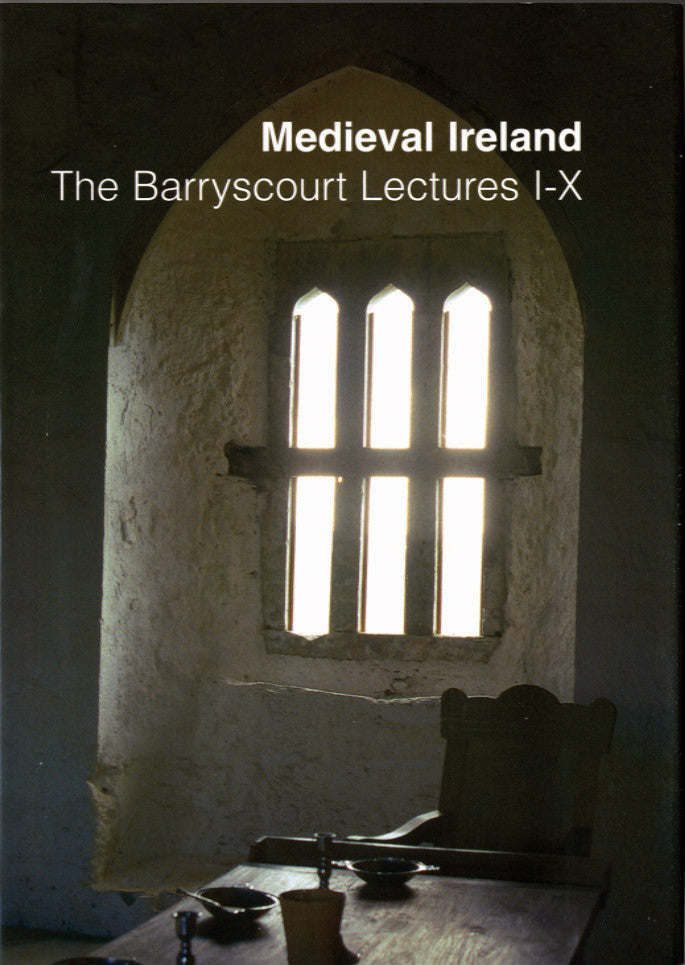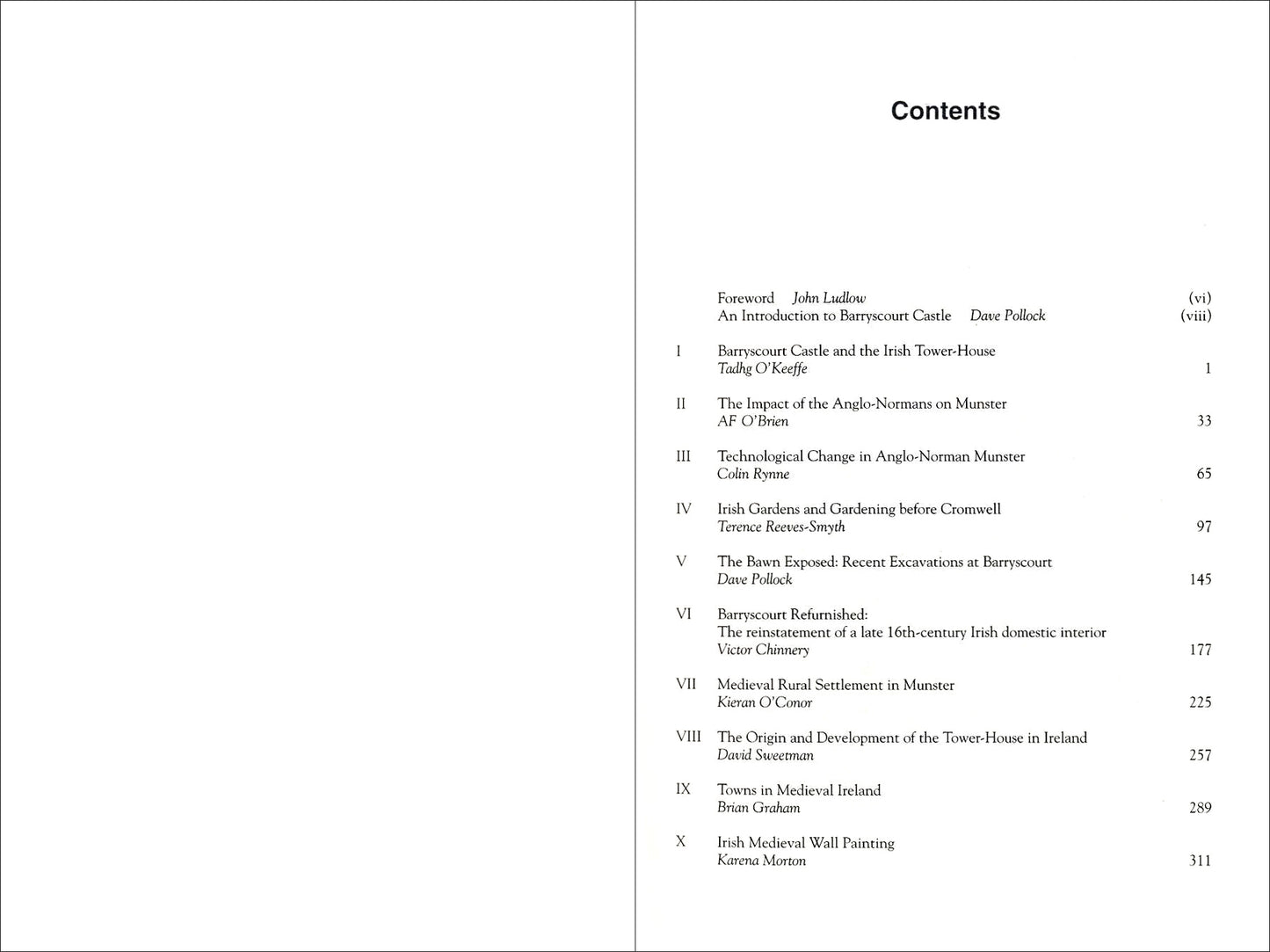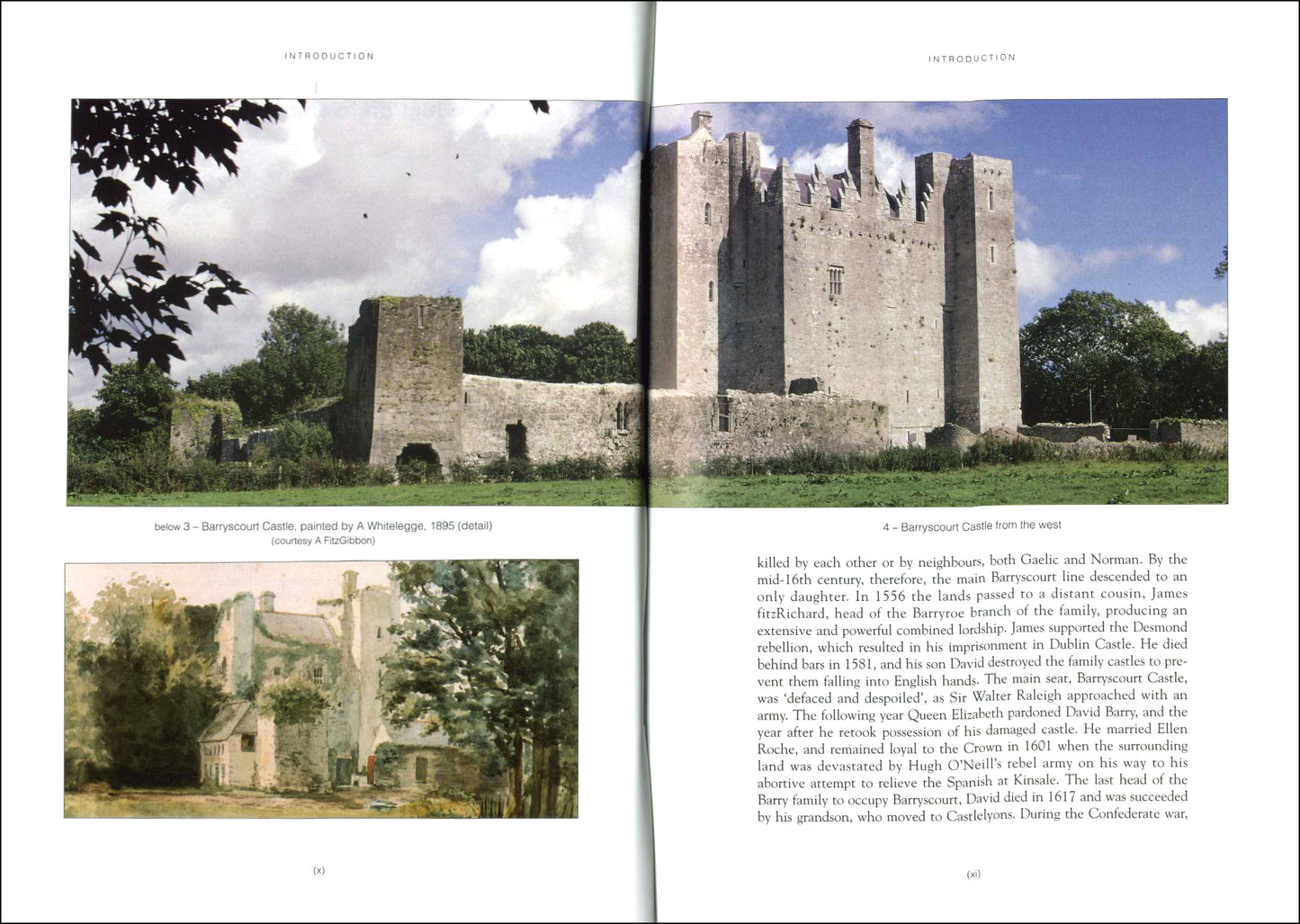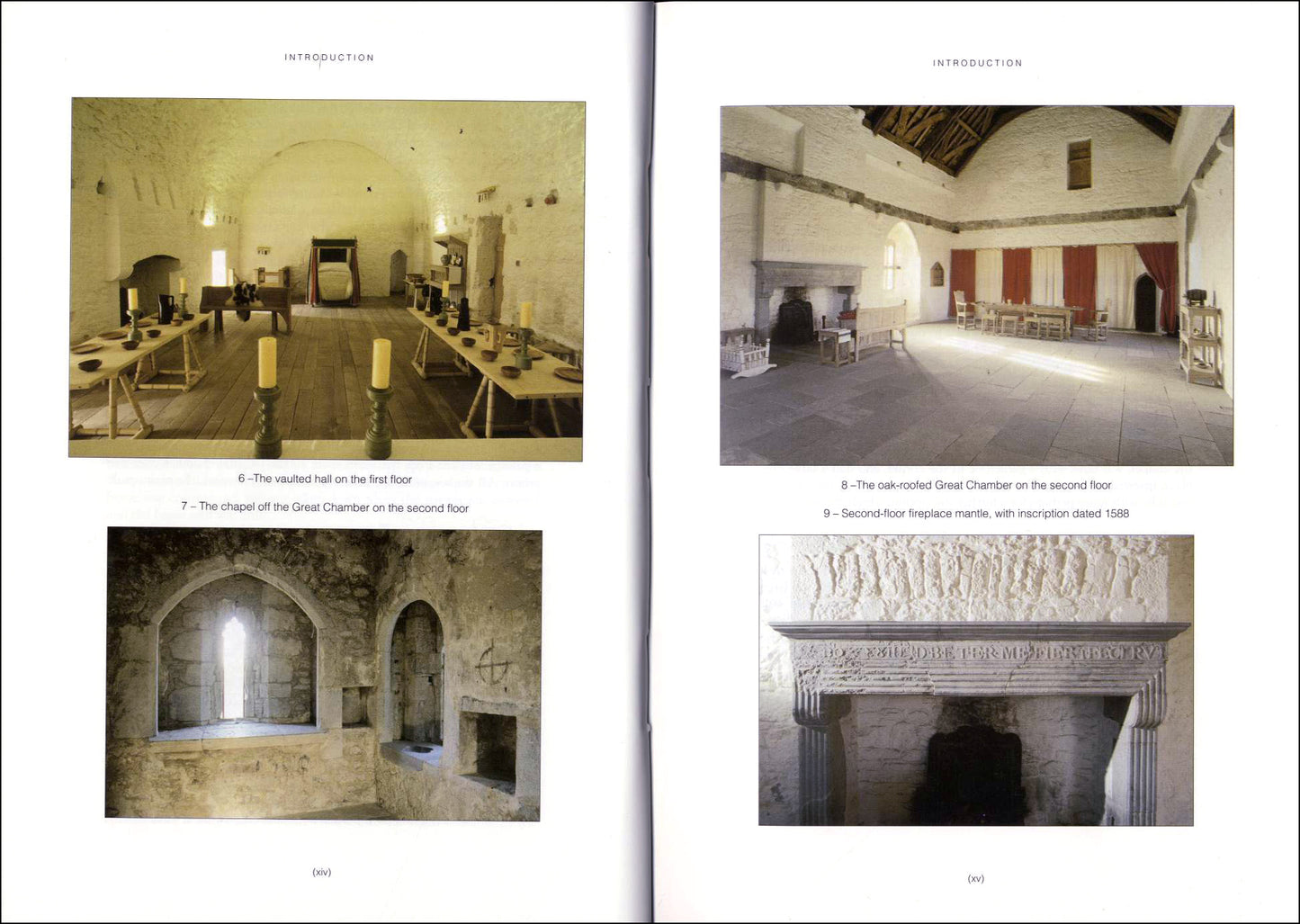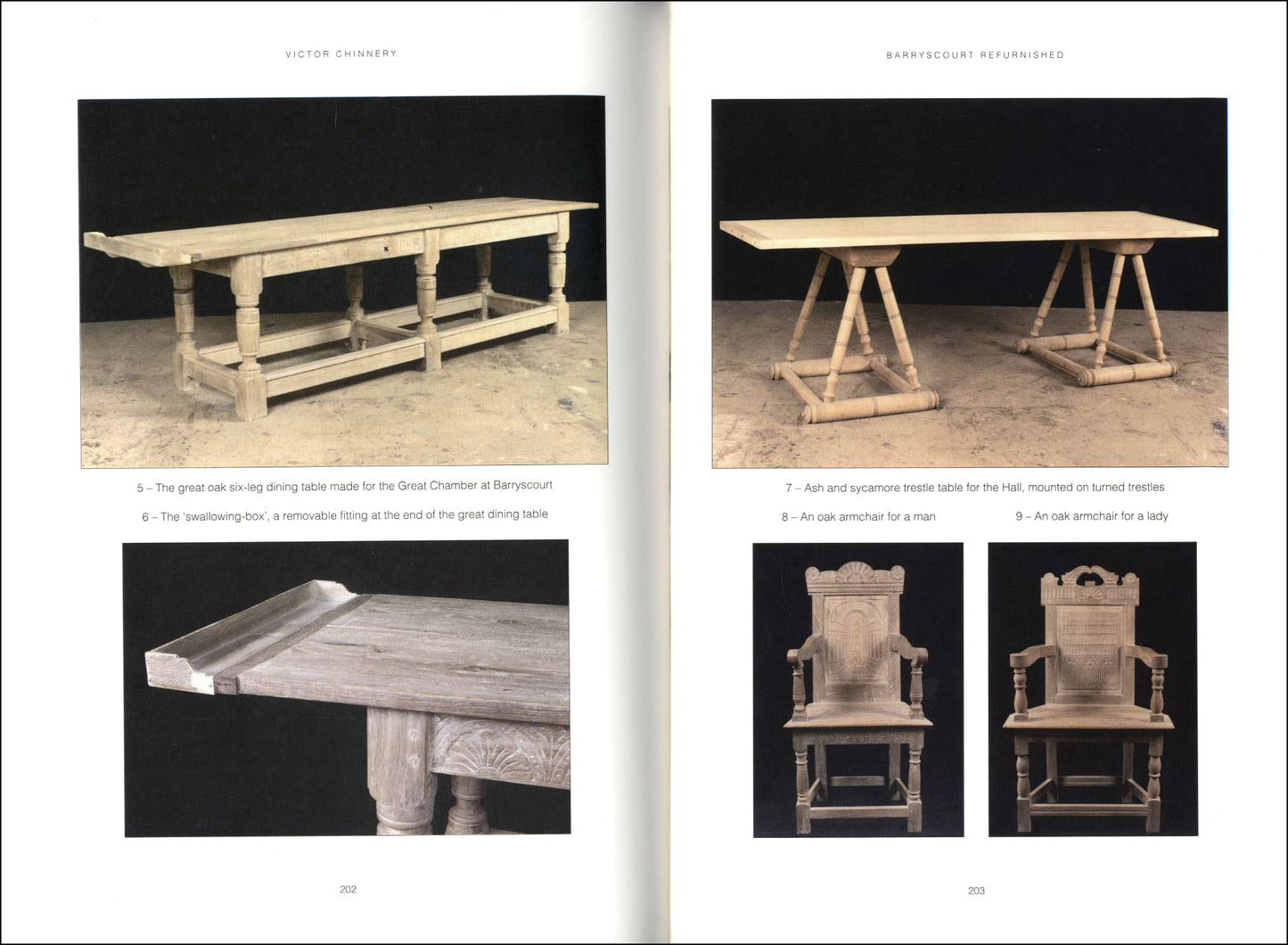Barryscourt Trust / Gandon Editions
Barryscourt Lectures 1 – 10: MEDIEVAL IRELAND
Barryscourt Lectures 1 – 10: MEDIEVAL IRELAND
Couldn't load pickup availability
Share
ed. John Ludlow and Noel Jameson
ISBN 9780946846306 394 pages (hardback) 24x17cm 384 illustrations
This is an anthology of ten major illustrated essays on medieval Ireland by the leading authorities in the field, based on the biannual lectures delivered at Barryscourt Castle, one of Ireland’s finest restored tower-houses. It also features an introduction to Barryscourt itself.
Barryscourt Castle is a 16th-century tower house at Carrigtwohill, county Cork. The Barryscourt Trust was established in 1987 with the aim of conserving, enhancing and developing the heritage potential of the castle. In 1996, as the restoration of Barryscourt Castle neared completion and its presentation as a reinstated 16th-century domestic interior was initiated, it seemed appropriate that additional attention be paid to the historical and social background of the period. The Barryscourt Trust instituted a biannual series of lectures on Medieval Ireland at the castle. The lectures dealt with aspects of medieval history, archaeology, art and architecture, and were delivered by scholars specialising in the period.
The Barryscourt Trust and Gandon Editions are to be warmly congratulated for producing this valuable collection of essays.
— Mike O’Neill, Irish Arts Review
_____
EXTRACT
"The seat of the Barry family, Barryscourt Castle, with its largely intact bawn wall and corner towers, is a fine example of an Irish tower-house. The Barrys, who became one of the principal Norman families in Ireland, came to this country in 1180 when Philip de Barri arrived from Manorbier in south Wales. Philip was the elder brother of Gerald of Wales (Giraldus Cambrensis), who was the chronicler of Norman Wales, and wrote of the Norman conquests in Ireland in his book Expugnatio Hibernica. The de Barris had been granted lands in Cork as Anglo-Norman control pushed west in the 12th century. By 1206, a charter of King John confirms the existence of a manor at Carrigtwohill, the nearby village, which was granted a market in 1234.
Barryscourt is strategically located between the important medieval ports of Cork and Youghal, and close to the early medieval route to the monastic settlement of Cloyne. As a family, the Barrys were very prolific, and a large number of branches developed, the most powerful headed by the Barrymore, or ‘Great Barry’, in Barryscourt, and by the Barryroe, or ‘Red Barry’, in Timoleague. During the 14th and 15th centuries the Barrys intermarried with many of the principal native Irish families, acquiring descriptive Irish names. At the same time, however, the Barrys were either killing or being killed by each other or by neighbours, both Gaelic and Norman. By the mid-16th century, therefore, the main Barryscourt line descended to an only daughter. In 1556 the lands passed to a distant cousin, James fitzRichard, head of the Barryroe branch of the family, producing an extensive and powerful combined lordship. James supported the Desmond rebellion, which resulted in his imprisonment in Dublin Castle. He died behind bars in 1581, and his son David destroyed the family castles to prevent them falling into English hands. The main seat, Barryscourt Castle, was ‘defaced and despoiled’, as Sir Walter Raleigh approached with an army. The following year Queen Elizabeth pardoned David Barry, and the year after he retook possession of his damaged castle. He married Ellen Roche, and remained loyal to the Crown in 1601 when the surrounding land was devastated by Hugh O’Neill’s rebel army on his way to his abortive attempt to relieve the Spanish at Kinsale.
The last head of the Barry family to occupy Barryscourt, David died in 1617 and was succeeded by his grandson, who moved to Castlelyons. During the Confederate war, Barryscourt was attacked and taken in 1645. Cannon damage is still visible on the tower-house walls. In the early 18th century, the Coppinger family took possession of Barryscourt, and built a new house close to the large tower. Little has survived of this house, but the older tower-house was remarkably intact when the Barryscourt Trust was established in 1987 with the aim of conserving, enhancing and developing the heritage potential of the castle. In the last decade of the 20th century, the shell of the massive tower-house was repaired and re-roofed by Dúchas, the Heritage Service. As work progressed, the tower-house, and the yard at its foot, have been investigated to provide a fuller picture of the original design."
— from the introduction by Dave Pollock
|
CONTENTS Foreword by John Ludlow (vi) An Introduction to Barryscourt Castle by Dave Pollock (viii) Chapter I – Barryscourt Castle and the Irish Tower-House by Tadhg O’Keeffe 1 Chapter II – The Impact of the Anglo-Normans on Munster by AF O’Brien 33 Chapter III – Technological Change in Anglo-Norman Munster by Colin Rynne 65 Chapter IV – Irish Gardens and Gardening before Cromwell by Terence Reeves-Smyth 97 Chapter V – The Bawn Exposed: Recent Excavations at Barryscourt by Dave Pollock 145 Chapter VI – Barryscourt Refurnished: The reinstatement of a late 16th-century Irish domestic interior by Victor Chinnery 177 Chapter VII – Medieval Rural Settlement in Munster by Kieran O’Conor 225 Chapter VIII – The Origin and Development of the Tower-House in Ireland by David Sweetman 257 Chapter IX – Towns in Medieval Ireland by Brian Graham 289 Chapter X – Irish Medieval Wall Painting by Karena Morton 311 |
